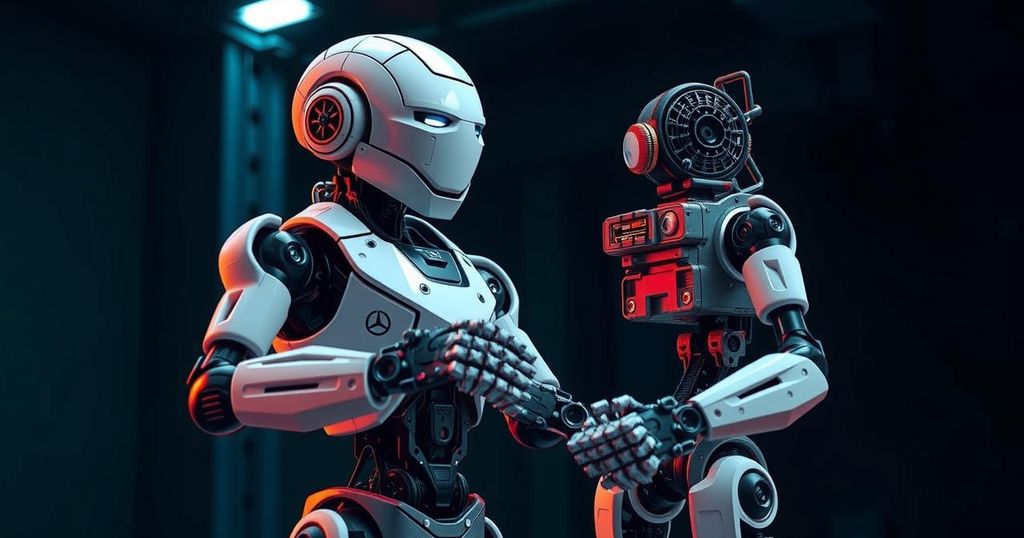Robotics Startups Flourish: A Promising Outlook for 2024
Robotics startups are thriving in 2024, with over $4.2 billion raised in funding. Significant investments are pouring into workplace robots, humanoid development, and surgical systems, suggesting a resurgence in the industry. Despite the enthusiasm, challenges remain regarding the practical execution of robotic technologies.
The year 2024 heralds a vibrant resurgence in the robotics startup landscape, with funding ventures flourishing across various segments including workplace robots, humanoid advancements, and surgical technologies. In just six months, these startups have cumulatively secured over $4.2 billion, an encouraging sign that suggests a robust evolution in robotics, even as it strives to surpass last year’s subdued figures. Notably, workplace robotics commands a significant share of these investments, reflecting the ongoing demand for automation in labor-intensive tasks.
San Francisco’s Bright Machines has emerged as a front-runner, securing $106 million in a Series C round aimed at enhancing factory manufacturing through software and robotics innovations. Likewise, Collaborative Robotics in Silicon Valley raised $100 million to advance its work alongside humans using collaborative robots designed for a range of industrial tasks. In agriculture, Carbon Robotics is making waves with an AI-enhanced weeding robot that integrates effortlessly into farming practices, garnering $85 million to date. The Bear Robotics venture is carving out a niche in hospitality and assisted living with a $60 million investment to develop mobile robots that assist with service delivery.
Meanwhile, humanoid robots, while still largely in the conceptual stage, are capturing significant investments as they inch closer to reality. Figure, based in Sunnyvale, California, has attracted an impressive $675 million for its general-purpose humanoid designs, backed by tech giants like Nvidia and Amazon. In contrast, 1X aims to create humanoid models that mimic human physiology; its focus lies on incorporating advanced AI into human-like forms to tackle complex tasks across various industries.
The surgical robotics sector is not lagging either, attracting substantial investments as it continuously innovates. MMI, a key player, raised $110 million for their microsurgical technologies that mimic human precision. Meanwhile, Shanghai’s Ronovo Surgical secured $44 million for its laparoscopic robotic systems, showcasing a growing trend in specialized robotic surgical solutions.
Despite the burgeoning interest in robotics, the real challenge lies in execution. While the need for robotic solutions appears evident—alleviating some of humanity’s most tedious and hazardous labor demands—the capability of these emerging technologies to deliver efficient, scalable, and affordable solutions remains to be seen. The landscape is dotted with success stories, but the peril of many startups failing looms large, reminding us that innovation requires not just vision but the relentless pursuit of practical application.
As 2024 unfolds, all eyes are on the robotics sector as it strives to balance ambition with execution, navigating the complexities of scalability and affordability. The future appears bright for those who can transform their promises into tangible realities.
In recent years, robotics has transcended the bounds of science fiction, increasingly becoming integral to various industries. The landscape of robotic applications is evolving rapidly, fueled by advancements in artificial intelligence and automation. Startups focused on robots for the workplace, healthcare, and even humanoids are gaining traction among investors, driven by a fusion of technological innovation and rising labor demands due to stagnant global population growth, particularly in developed regions. The robotics sector is seeing significant funding influxes as it harnesses the power of AI to revolutionize traditional workflows and alleviate labor shortages across numerous fields.
2024 stands as a pivotal chapter in the evolution of robotics startups, characterized by an impressive influx of funding exceeding $4.2 billion. Companies across workplace, surgical, and humanoid robotics are capturing both investor attention and market potential, signaling a newfound dynamism within the industry. Yet, as promise meets the complexities of practical implementation, the journey ahead will require startups to not only envision but also execute effectively, ensuring they realize the transformative impact they aim to deliver.
Original Source: news.crunchbase.com




Post Comment